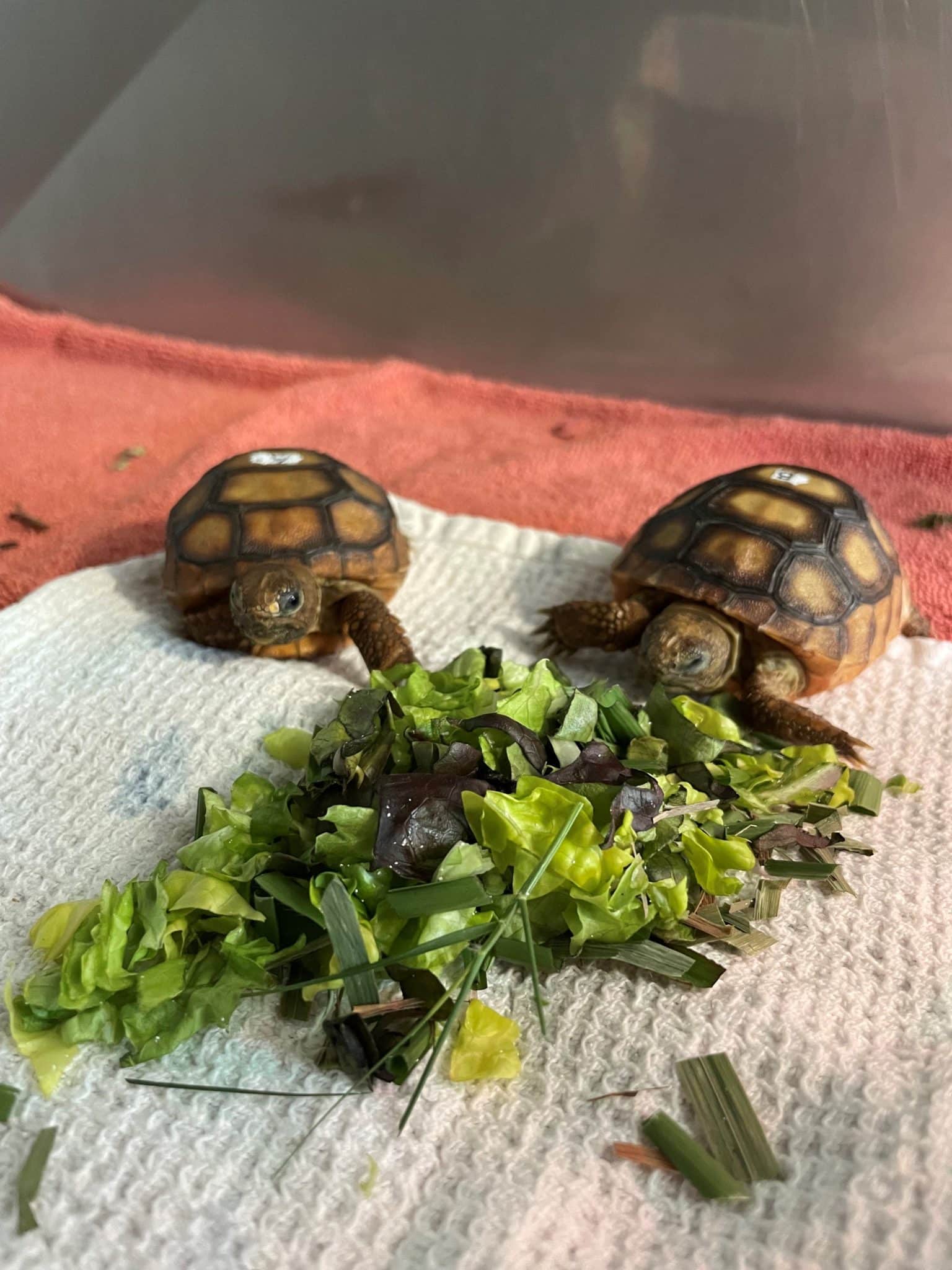
Baby Gopher Tortoise Care: A Comprehensive Guide
Introduction
Baby gopher tortoises are adorable and fascinating creatures, but they require specialized care to thrive. These hatchlings are vulnerable and need a carefully controlled environment to ensure their health and well-being. This comprehensive guide will provide you with all the essential information you need to provide optimal care for your baby gopher tortoise.
Housing
- Enclosure: Provide a spacious enclosure that is at least 4 feet long, 3 feet wide, and 2 feet high.
- Substrate: Use a mixture of sand, soil, and leaf litter to mimic their natural habitat.
- Shelter: Offer multiple hiding places, such as overturned flower pots, cardboard boxes, or commercially available tortoise huts.
- Heat Source: Maintain a basking area with a temperature of 85-95°F (29-35°C) using a heat lamp or ceramic heat emitter.
- Humidity: Keep the humidity level between 50-70% by misting the enclosure regularly or using a humidifier.
Diet
- Primary Food: Baby gopher tortoises are herbivores and their diet should consist primarily of leafy greens, such as dandelion greens, collard greens, romaine lettuce, and escarole.
- Supplements: Offer a calcium supplement twice a week to ensure proper bone development.
- Water: Provide a shallow water dish for drinking and soaking.
Health
- Veterinary Care: Schedule regular veterinary checkups to monitor your tortoise’s health and prevent any potential issues.
- Respiratory Infections: Baby gopher tortoises are susceptible to respiratory infections, so keep the enclosure clean and well-ventilated.
- Shell Problems: Examine the shell regularly for any signs of damage or infection.
- Parasites: Test for parasites and treat as necessary.
Handling
- Frequency: Handle your tortoise only when necessary, such as for feeding or cleaning.
- Support: Always support the tortoise’s body and shell when handling.
- Avoid Dropping: Never drop your tortoise, as this can cause serious injuries.
Hibernation
- Age: Baby gopher tortoises do not hibernate until they are at least 2 years old.
- Preparation: Gradually reduce food intake and lower the temperature in the enclosure over several weeks before hibernation.
- Burrowing: Provide a deep, sheltered area for the tortoise to burrow into during hibernation.
Common Issues
- Pyramiding: A condition where the tortoise’s shell becomes raised and bumpy due to improper diet or lack of calcium.
- Metabolic Bone Disease: A condition caused by calcium deficiency, resulting in weakened bones and shell deformities.
- Respiratory Infections: Symptoms include wheezing, coughing, and nasal discharge.
- Shell Rot: A bacterial infection that causes the shell to soften and deteriorate.
Additional Tips
- Socialization: Baby gopher tortoises are solitary animals, but they can benefit from occasional interactions with other tortoises of the same species.
- Enrichment: Provide enrichment activities, such as digging boxes, climbing structures, and toys, to stimulate their natural behaviors.
- Patience: Baby gopher tortoises require a lot of care and attention. Be patient and provide a consistent routine to ensure their well-being.
Conclusion
Providing proper care for baby gopher tortoises is essential for their health and longevity. By following the guidelines outlined in this guide, you can create an optimal environment for your hatchling to thrive. Remember to consult with a veterinarian regularly to ensure your tortoise’s well-being and address any health concerns promptly. With proper care and attention, your baby gopher tortoise can become a cherished companion for many years to come.
